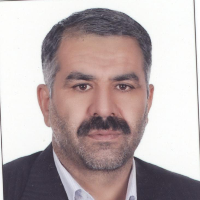Survey of mercury (Hg+2) removal from aqueous solutions with multiwalled carbon nanotubes coated by iron oxide
Author(s):
Abstract:
Background And Aims
Water pollution is undoubtedly one of the major problems faced by the world today. Water pollution by heavy metals is one of the most important environmental problems., mercury is a highly toxic metal Among the heavy metals. it can cause nerve damage in humans irreversibility. It can easily cross the brain-blood barrier and affect fetal brain. High concentrations of Hg+ 2 due to respiratory and renal dysfunction and pain in the chest as well. The aim of this study was to evaluate the effectiveness of multi-walled carbon nanotubes Combined with iron oxide to remove mercury in aqueous solutions. Methods
This experimental study the multi-walled nanotubes combined with iron oxide and used for removal mercury. the effects of parameters such as pH solution, contact time, stirring speed, amount of nano-composite and interference (nitrate and chloride) were investigated and the optimum conditions were determined for each of these parameters by using minitab software and analyzed by Taguchi statistical method. Results
The findings of this study showed that the neutral pH than acidic and alkaline pH is more suitable for the removal of mercury, and the best stirring speed is 150 rpm, 60 minutes Contact time, is a good time. At this time can be removed 93% of the mercury depending on the nano composite. the Best of nano composite is 60 mg per liter to achieve the desirable removal of mercury. In addition, at low concentrations (less than one milligram per liter) nanocomposites can be 87 percent remove mercury mercury. In this study, the addition of interfering factors (nitrate and chloride), decreased mercury removal by 10%. Conclusion
The results of this study showed that use of the nanotubes coated with iron oxide without at neutral pH, contact time 60 min, stirring rate of 150 rpm, and the nano-composite 60 mg, can be achieved mercury removal 93%. also according to the results this nano-composite considered as a suitable choice for treatment of drinking water and industrial wastewater.Keywords:
Language:
Persian
Published:
Journal of Shahrekord University of Medical Sciences, Volume:17 Issue: 6, 2016
Pages:
33 to 44
https://www.magiran.com/p1505538
سامانه نویسندگان
مقالات دیگری از این نویسنده (گان)
-
Water Reclamation and Reuse: with the Emphasis on the 7th Development Plan (Planning to Access Other Waters and Recycling Industrial Water and Effluent)
Mohammad Mobini Lotfabad, *
Journal of Rafsanjan University Of Medical Sciences, -
Evaluation of the Amount of Heavy Metals in Potato and Soil of Agricultural Lands in Sefid Dasht- Chaharmahal and Bakhtiari Province in 2017
, Fazel Mohammadi-Moghadam, Sara Hemati, Kobra Shakeri*
Scientific Journal of Kurdistan University of Medical Sciences,




